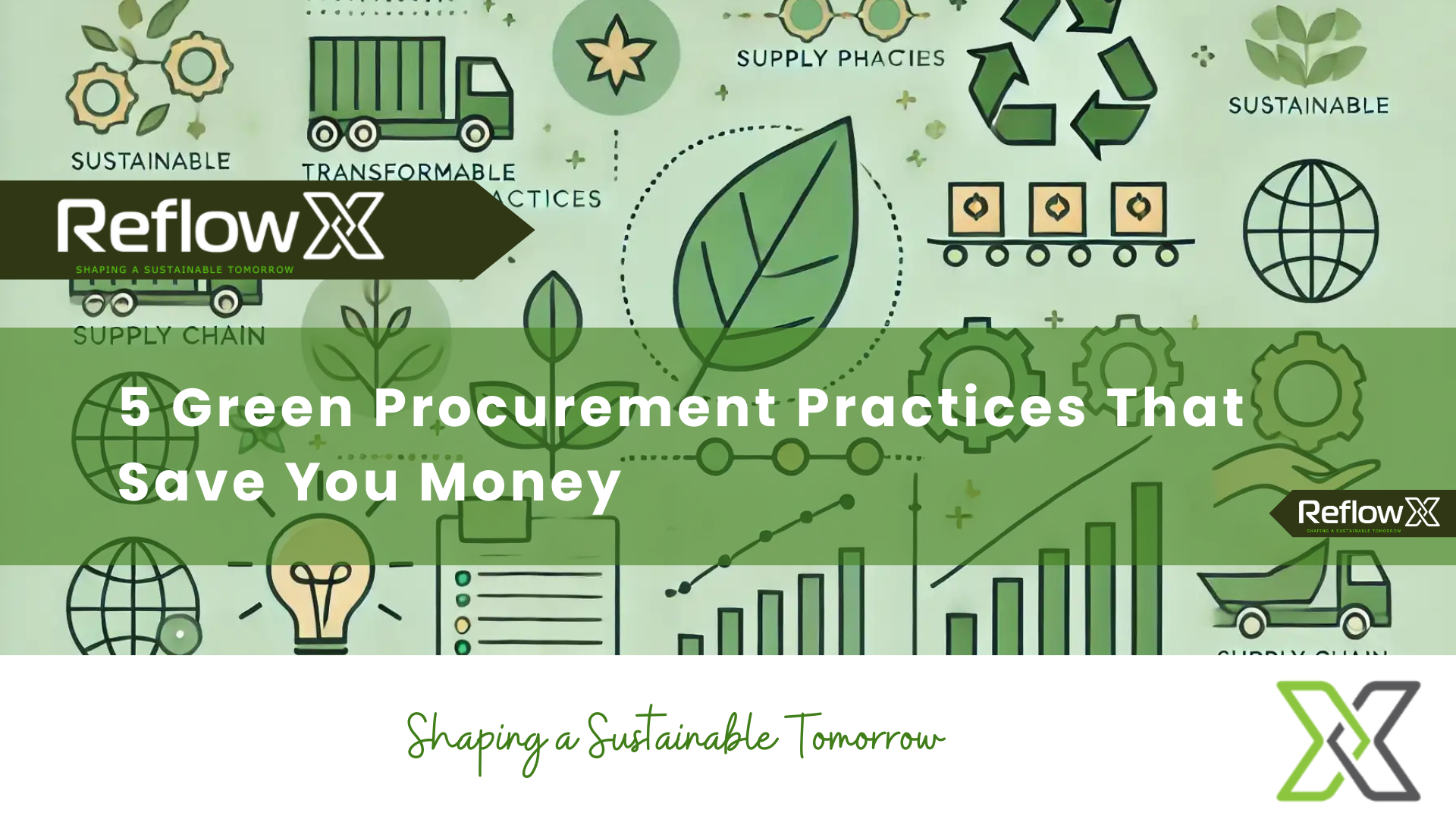
Sustainability in business isn’t just a fad—it’s a clever way to cut costs and prepare your operations for the future. Many firms think eco-friendly practices cost a lot. But the fact is, green procurement Practices picking sustainable goods and services—can lower expenses, simplify supply chains, and increase brand value.
Let’s look at five green procurement practices that are not kinder to the planet, but also help your bottom line.
5 Green Procurement Practices to Save on Money.
1. Buy Energy-Efficient Equipment
Switching to energy-efficient equipment is a good initial step. Things like LED lighting, Energy Star-certified machines, and power-conserving electronics may seem more expensive initially, but energy bills are reduced every month.
For example, changing to LED lights may save 80% in electricity usage. When you apply this saving in an office, a warehouse, or a factory, you will see huge reductions in costs.
This change also helps achieve environmental targets because lower energy use leads to fewer emissions.
2. Pick Recycled or Upcycled Materials
Using recycled materials is one of the simplest green procurement tactics. Recycled paper, packaging, plastic, and metals often cost less than new materials and need less energy to make.
What’s even better? A lot of suppliers now sell upcycled or surplus materials, like extra electronic parts or raw materials from overproduction, which can be just as good as new ones. Using these doesn’t just cut costs; it also helps to reduce waste and lower landfill expenses.
This is where smart sourcing shows its value.
3. Team Up with Local and Eco-Friendly Suppliers
Shunting goods long distances costs fuel and puts up costs. A partnership with local/ regional suppliers will minimize the cost of shipping and carbon emissions. Plus: Custom deliveries within proximity from vendors take less time, and they will be faster to respond to what you need.
Go one step further by choosing vendors themselves that practice green methods – using less packaging, and utilizing clean energy or re-use manufacturing waste.
Your supply chain becomes productive and resilient, and you align it to your values.
4. Carry out Lifecycle Cost Analysis (LCCA)
When you evaluate products, don’t just go off the purchase price. Lifecycle Cost Analysis (LCCA) considers the entire cost of owning a product, including purchase, operation, maintenance, and disposal.
It is many times the case that eco-friendly products last longer and use less energy, and require fewer repairs. To give an example, a purchase of a high-efficiency HVAC system may be thought expensive, but you could save thousands in energy and repair costs through its entire lifetime.
LCCA guarantees that you view the full picture and make the smart long-term investment.
5. Reuse, Repurpose, and Redistribute Surplus Assets
The most effective procurement Practices strategy that can be employed under the green procurement scenario is to use existing resources more efficiently. Instead of discarding additional materials, office furniture, or idle equipment, how can you utilize or distribute them within your firm or supplier chains.
This reduces wastage, prevents unnecessary purchases, and often uncovers hidden assets that you can use for future work
Systems and tools that monitor extra inventory can streamline this process, cutting costs, freeing up space, and saving time.
Why Green Procurement Benefits Everyone
More businesses now see that sustainable practices aren’t just about checking an ESG box—they’re about smart business decisions.
Here’s why:
- Lower operating costs
- Better risk handling
- Higher customer confidence
- Improved regulatory compliance
- Enhanced supplier ties
Green buying is now crucial. It gives you an edge in a fast-changing market.
Last Thoughts: Choose Green, Cut Costs—with ReflowX
Want to include green buying in your business plan? ReflowX can assist.
ReflowX gives manufacturers and companies new tools to handle extra stock, cut waste, and create supply chains that last. If you aim to improve your buying process or reuse materials better, ReflowX has the right tools to help you succeed.
Adopt green procurement not just for its environmental benefits, but because it’s cost-effective. And when you’re ready to take action, check out ReflowX.com and discover how smart sustainability begins with wiser decisions.
FAQ’s
- How is the green procurement and how it is important for businesses?
Green procurement is the act of purchasing products and services that have little to no environmental impact. It is capable of helping businesses decrease waste and energy costs as well as achieve sustainability goals, plus more efficiency and longer-term profitability.
- In what ways does green procurement reduce operational costs?
Such eco-friendly moves as the purchase of energy-efficient equipment, use of recycled materials, and local suppliers help to decrease utility bills, transport expenses, and maintenance costs, respectively, so making sustainability rather a smart business move than a fundamental concept.
- Where should companies search for sustainable suppliers?
Seek suppliers that use eco-friendly products, have low packaging, and have fewer emissions and fair labour practices. Their values must be in line with your sustainability goals for sustained, long-term effect throughout the supply chain.
- How does ReflowX help in formulating green procurement strategies?
ReflowX is a tool that facilitates inventory management and matching of surplus inventory with sustainable materials, thus reducing waste and procurement bills. With their platform, they make it possible for smarter, greener sourcing, all the way in energy, electronics, and manufacturing fields. Explore more at ReflowX.com.
 Prev Blog
Prev Blog